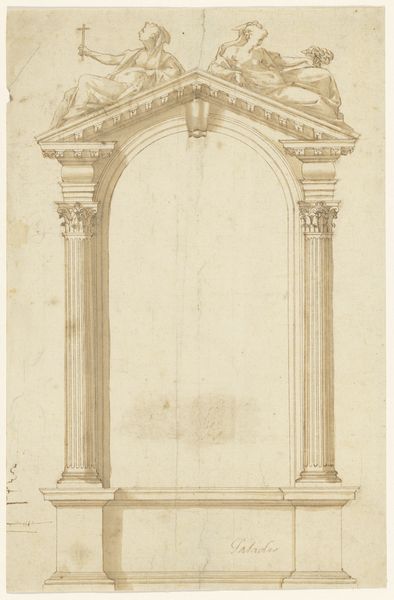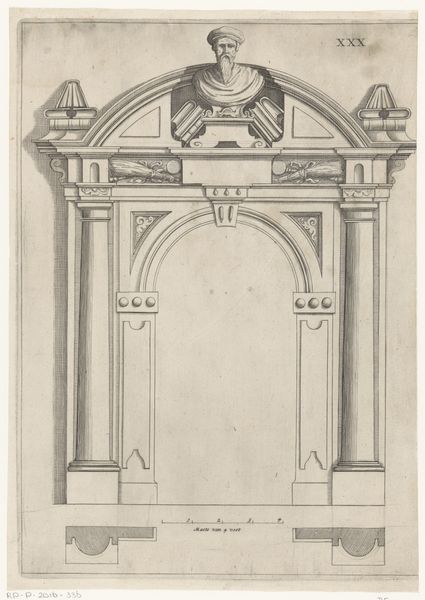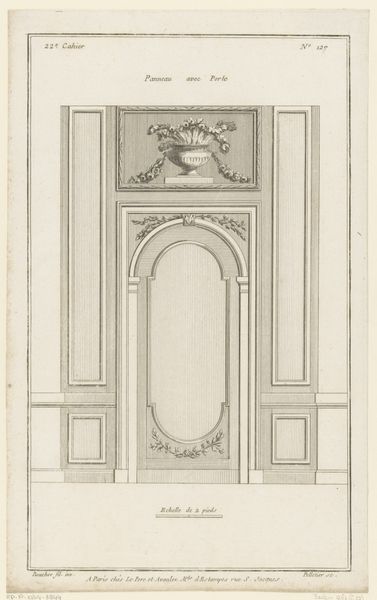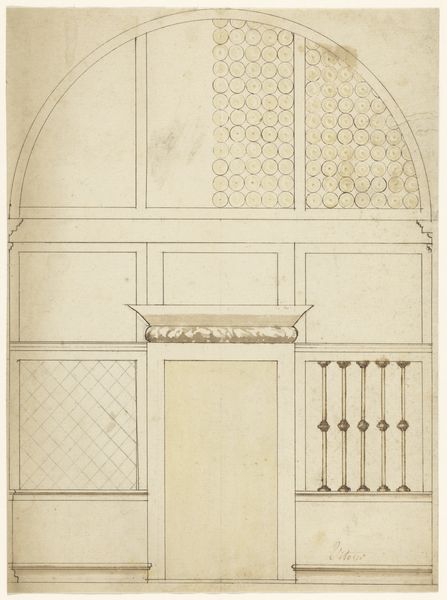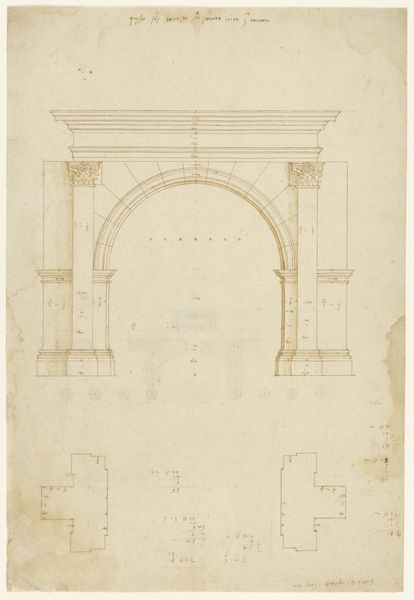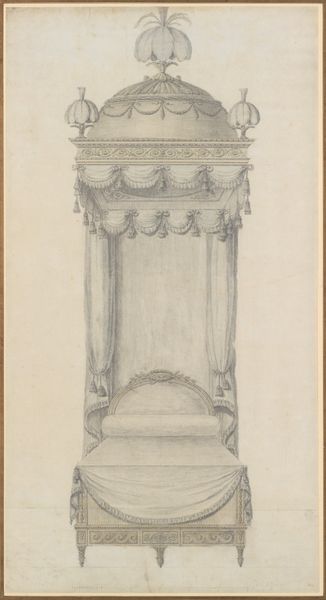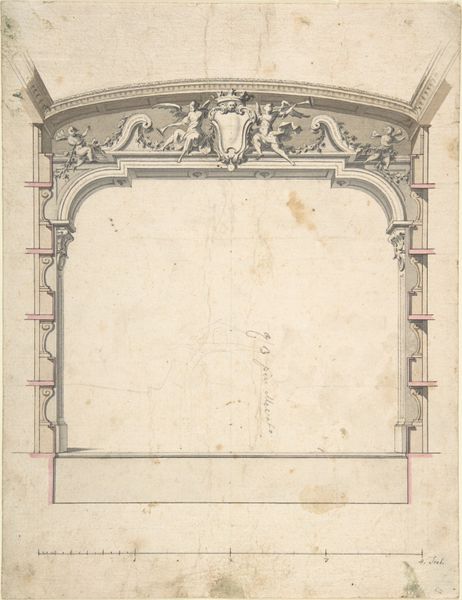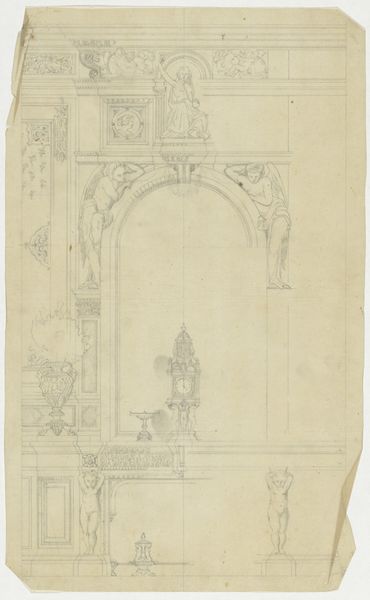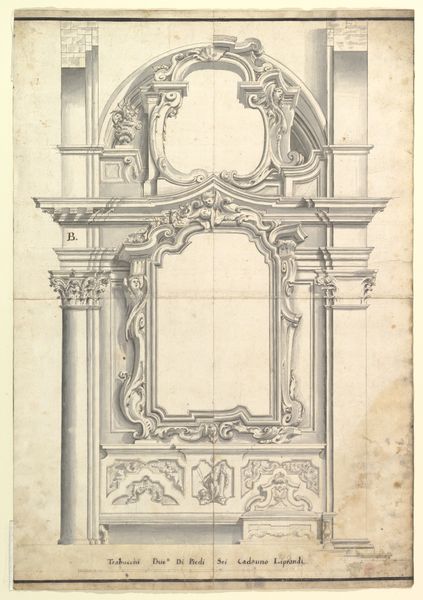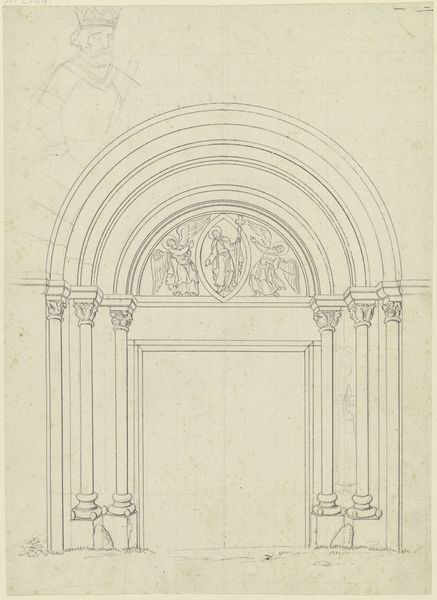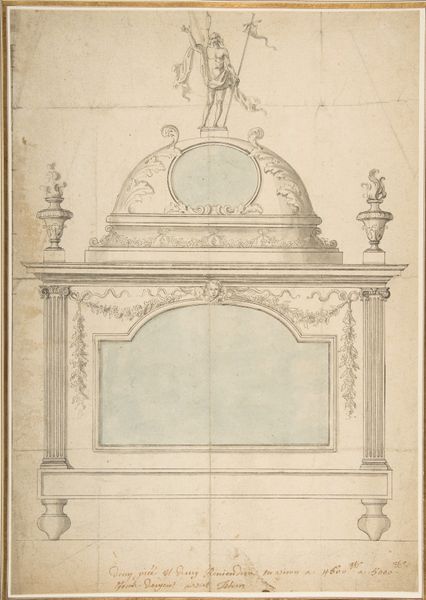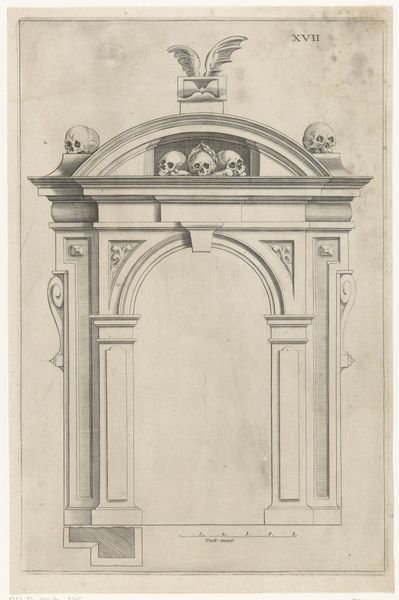
drawing, print, architecture
#
drawing
# print
#
landscape
#
form
#
geometric
#
arch
#
line
#
architecture
#
rococo
Dimensions: Sheet: 14 5/16 x 10 1/4 in. (36.3 x 26 cm)
Copyright: Public Domain
Editor: So this is “Plan and elevation of a rococo arch,” a drawing made between 1710 and 1730 by an anonymous artist. What I immediately notice is the level of detail – all those tiny, precise lines forming the arch's ornamentation. How would you approach analyzing something so focused on form? Curator: Focusing purely on form, we see a deliberate interplay between linear precision and decorative exuberance. Consider the arch itself: the rigid geometry of its structure provides a framework for the swirling, almost organic, motifs cascading across its surface. This tension—between order and chaos, restraint and indulgence—is essential to its Rococo character. What compositional elements stand out to you? Editor: I guess the repetition of the lattice pattern catches my eye, and how it contrasts with the smoother, curvilinear details, like the floral ornament in the center and the small urns. It almost seems like they’re trying to break free from that rigid structure you mentioned. Curator: Precisely. This controlled tension, the push and pull of contrasting elements, creates visual interest and energy. Note how the artist employs line to delineate form and shadow. Observe, in particular, how variations in line thickness and density suggest depth and volume, giving the illusion of three-dimensionality on a flat plane. This systematic treatment is paramount to understanding the artist's intention. How might a semiotic reading expand our view of the design? Editor: That’s a great question. Thinking semiotically, those urns could symbolize classical antiquity, reinterpreted through the Rococo lens of ornamentation and excess. The arch itself becomes a signifier of status and refined taste, a portal to an imagined world of aristocratic pleasure. Curator: Exactly. The arch, as a structural element, performs both literally and figuratively. The artwork challenges our appreciation and our view of functionality by suggesting the design can stand independently. What would be lost without these rigorous details? Editor: Without the intricate details, it’d just be a basic arch. The details elevate it to art. It makes me see the real intent. Curator: And understanding this transformation underscores the purpose of the piece and artistic mastery.
Comments
No comments
Be the first to comment and join the conversation on the ultimate creative platform.
